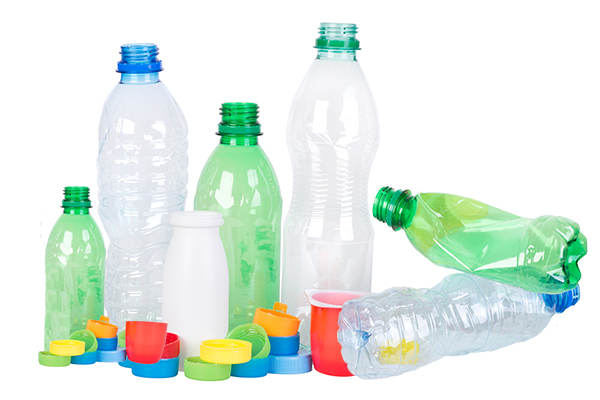
Changes are likely coming soon to the type of plastics that will be recyclable in San Juan County. In the past we’ve accepted most plastics in the co-mingled recycling stream.
However it is likely that in the near future only #1, #2 and #5 plastics will be accepted. The rest of your plastic will go in the garbage.
The reason is pretty simple–plastics numbered three through seven hardly ever get recycled. The material its landfilled, or worse, ends up in third world countries where it is often burned.
So what is the difference between the plastics?
#1 Plastic or “PET” is made from Polyethylene Terephthalate. It is commonly be found in water and beverage bottles, food containers, and salad dressing and mouthwash bottles. PET is easily recycled, by shredding it into small flakes which are then reprocessed to make new PET bottles, or is spun into polyester fiber.
#2 Plastic or HDPE is made from High Density Polyethylene and is used in items such as milk jugs, water bottles, detergent, shampoo bottles, and tubs. It is a strong, rigid plastic (think plastic chairs) and is easily recycled to make things like recycling containers, lumber, floor tile, benches and picnic tables, and outdoor furniture.
#3 Plastic is PVC, Polyvinyl Chloride. PVC is not very recyclable, and is pretty toxic. Mostly used in construction, PVC should be avoided, and never recycled.
#4 Plastic is Low-Density Polyethylene, or basically plastic film. Fairly safe to use in the home, but rarely recycled. If collected separately there are outlets for plastic film when baled. The Exchange will explore this when our baler facility is built in late 2022 or 2023. However for now, it’s best to reuse plastic films and air-filled packaging if you can, or put them in the trash.
#5 Plastic is Polypropylene, and is very common in packaging, Yogurt cups, plastic cutlery, berry boxes. While it is fairly easily recycled, it rarely is, and is often a material shipped to third-world countries. Better to re-use it at home, or put it in the trash. The EPA says only 2.7% of #5 plastics are actually recycled. ORS and San Juan County continue to have conversations about re-defining #5 plastics as trash, rather than recycling.
#6 Plastic is Polystyrene or Styrofoam. Many Styrofoam products are now banned in Washington State, and that’s a very good thing. Very difficult to recycle, it almost never is. It breaks down easily in the environment and pollutes. Coolers, disposable drinking cups, CD cases, food containers, packaging materials…avoid purchasing Styrofoam to begin with, but if you get stuck with it put it in the trash.
#7 Plastics=Other. Number seven is a catch-all for all other plastics. That can include polycarbonate, bio-plastics, so-called compostable plastics. It’s found in packaging, sports equipment, car parts, baby bottles. Often the lid or cap on your plastic container are made from a #7 plastic. No one actually recycles #7 plastics, because you can’t mix together different chemical types into a useable recycled material. That goes for all plastics—you can’t mix #1 and #2 plastic together and make a useable new plastic product.
The Exchange will continue to accept all plastics for the forseeable future. It will go in your co-mingled recycling bins. In the future we hope to begin accepting 1, 2, 5 and 4 (film) plastics separated by number.
But the bottom line is there is nothing particularly redeeming about any plastics, especially single-use plastics. We need to stop purchasing these materials. When we are shopping we need to pick the ketchup that comes in a glass bottle rather than at plastic bottle. We need to pressure supermarkets to buy products in glass and metal containers, and request those materials from their suppliers.
We also need to support legislation that restricts the plastic use and the plastic industry. There is really great legislation working its way through state legislatures in Washington, Oregon, California, Maine, Vermont and New Hampshire around waste and recycling.
The Exchange is a big supporter of “Zerowaste Washington”, a non-profit based in Seattle that does all kinds of great stuff, particularly working with the legislature in Olympia. You can learn a lot about what they do here.
